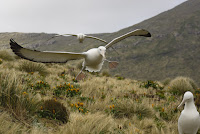Radom National Park Sudan
 |
| Radom National Park - Google Maps |
Although it was designated in 1979 as a member of the World Network of Biosphere Reserves, very little information or studies or articles or photos exist on Radom. As late as 1970, Sudan boasted some of the most unspoilt and isolated wilderness in Eastern Africa, and its wildlife populations were world-renowned. That is no more: the past few decades have witnessed a major assault on both wildlife and their habitats - due to war and conflict, what remains of the country's wildlife is both internationally significant and an important resource opportunity for Sudan. A resource that the present Sudanese leadership and those concerned, just as they are doing with agriculture and livestock, should make a high priority to protect, conserve and develop.
Pastoralists and their herds are now well entrenched in Radom National Park, creating competition for water and fodder, leading to land degradation through burning and overgrazing; and they facilitate and assist in poaching. The ready availability of firearms has been the most significant factor in the reduction of wildlife in the park, and has also compounded the problems of habitat destruction. Uncontrolled and unsustainable levels of hunting have devastated wildlife populations and caused the local eradication of many of the larger species. This irresponsible and uncontrolled hunting and poaching has wiped out the once many tora hartebeests and the defassa waterbucks. Elephants, giant elands, korrigums, giraffes and hippopotamus - once many - can no longer be seen in RNP; and numbers of other species are declining fast. Even some birds, which the park is rich in - have disappeared. The harvesting of animals in Sudan takes two general forms: commercial poaching for non-meat products, and the bushmeat culture and industry.
Game reserves, game sanctuaries, wildlife habitats in Sudan, lack proper management, or serious protective measures. These areas do not have regular, well managed - patrolling, monitoring or assessment. As Sudan is home to a number of globally important and endangered species of mammals, birds, reptiles and plants, as well as endemic species - the country needs international support and assistance. The tourism industry, which right now does not exist properly, should be better managed and developed; there has to be a management plan and enforcement for the country's very few, but precious wildlife and habitats. Sudan needs much more investments in the tourism industry - financial, material, much better infrastructure and many more, well trained personnel - to both serve in the tourist industry and to protect its wildlife. All unlicensed firearms in the country, especially in Southern Darfur, should be collected. Hunting should be banned for as long as it takes to have the park back in order. And above all: to benefit and profit from what remains of its wildlife, Sudan needs security and stability.
+ Read this report by UNEP
+ FAO: THE CHANGE DRIVERS
+ Radom: Biosphere Reserve Information


